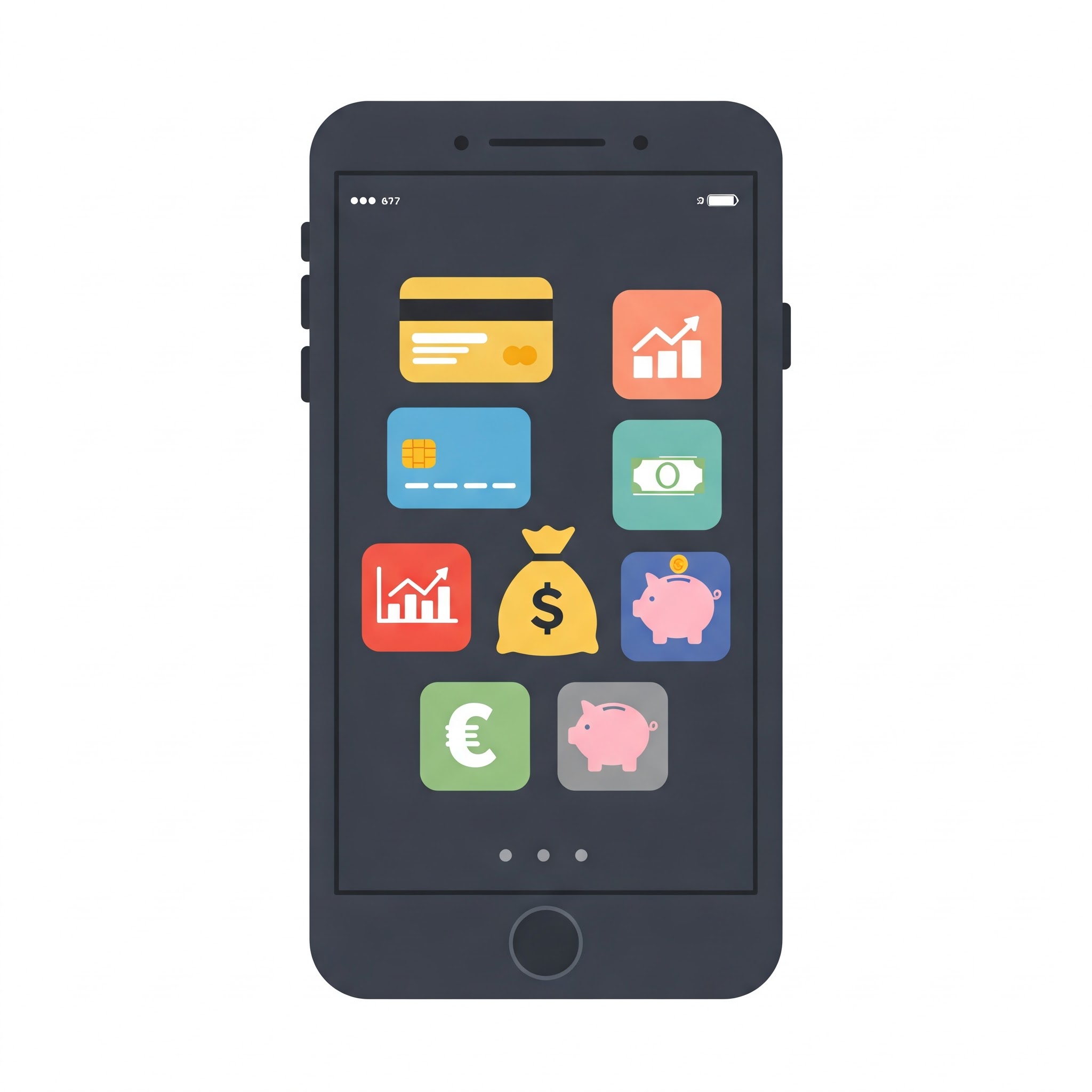Top 10 Finance Apps to Simplify Your Money Management in 2025
"The essence of investment management is the management of risks, not the management of returns." — Benjamin Graham
The Mathematics of Personal Finance
Managing personal finances effectively is both an art and a science. The mathematical foundation of good financial management can be expressed through several key equations:
$\(FV = PV(1 + r)^n\)$
This compound interest formula demonstrates how your investments grow over time, where FV is future value, PV is present value, r is the interest rate, and n is the number of periods.
The value of diversification in investment can be quantified through the portfolio variance equation:
$\(\sigma_p^2 = \sum_{i=1}^{n} w_i^2 \sigma_i^2 + \sum_{i=1}^{n} \sum_{j=1, j \neq i}^{n} w_i w_j \sigma_i \sigma_j \rho_{ij}\)$
Where σ_p^2 is portfolio variance, w_i is the weight of asset i, σ_i is the standard deviation of asset i, and ρ_{ij} is the correlation between assets i and j.
The Financial Management Ecosystem
This flowchart illustrates how different aspects of financial management interconnect to create a comprehensive system for building wealth and security.
Comparing Top Finance Apps for 2025
| App Name | Primary Function | Key Features | Cost | User Experience | Integration Capabilities |
|---|---|---|---|---|---|
| Mintify | All-in-one financial management | Automated categorization, bill tracking, investment monitoring | Free with premium tier ($8.99/month) | Excellent UI, comprehensive dashboard | 10,000+ financial institutions |
| Wealth Front | Automated investing | Portfolio rebalancing, tax-loss harvesting, financial planning tools | 0.25% management fee | Clean interface, goal-focused | Bank accounts, mortgages, other investments |
| BudgetMaster | Zero-based budgeting | Envelope system, real-time tracking, collaborative budgeting | $9.99/month | Intuitive, customizable categories | Most major banks and credit cards |
| RetireCalc Pro | Retirement planning | Monte Carlo simulations, scenario testing, withdrawal strategies | $49.99/year | Complex but powerful, detailed projections | 401(k)s, IRAs, investment accounts |
| DebtCrusher | Debt reduction | Payoff strategies, interest savings calculator, progress tracking | $4.99/month | Motivational, milestone-based | All credit accounts, loans |
| TaxSmart | Tax optimization | Deduction finder, document organization, tax forecasting | $79.99/year | Form-based, step-by-step guidance | Tax documents, investment accounts |
| CryptoTrack | Cryptocurrency management | Portfolio tracking, tax reporting, DeFi dashboard | Free with trading fees | Modern, real-time data | Major exchanges and wallets |
| InsuranceHub | Insurance management | Policy comparison, coverage analysis, claim tracking | Free | Straightforward, document-centered | Major insurance providers |
| EstateOrganizer | Estate planning | Document storage, beneficiary management, will creation | $14.99/month | Comprehensive, security-focused | Legal documents, financial accounts |
| ExpenseAI | Receipt tracking & expense management | OCR technology, report generation, reimbursement tracking | $7.99/month | Minimal, automation-focused | Accounting software, corporate cards |
The Science Behind Financial Decision Making
Financial apps leverage behavioral economics principles to help users make better decisions. The probability of maintaining a budget successfully can be modeled as:
$\(P(success) = \frac{e^{\beta_0 + \beta_1 \cdot frequency + \beta_2 \cdot automation + \beta_3 \cdot feedback}}{1 + e^{\beta_0 + \beta_1 \cdot frequency + \beta_2 \cdot automation + \beta_3 \cdot feedback}}\)$
Where frequency represents how often users check their finances, automation indicates the degree of automated tracking, and feedback represents the quality of insights provided.
Decision Trees in Personal Finance App Selection
The Evolution of Financial Technology
Mathematical Models of Financial Behavior
User engagement with financial apps follows distinctive patterns that can be modeled mathematically. The frequency of app usage often follows a modified Poisson distribution:
$\(P(X = k) = \frac{\lambda^k e^{-\lambda}}{k!} \cdot (1 + \alpha \cdot sin(\frac{2\pi t}{T}))\)$
Where λ represents the base usage rate, t is time, T is the period (often monthly, coinciding with bills or paychecks), and α is the amplitude of periodic variation.
The relationship between app usage frequency and financial outcomes follows a logarithmic pattern:
$\(Improvement = \beta_0 + \beta_1 \cdot log(Usage) + \beta_2 \cdot Features\)$
Where Usage is the frequency of interaction and Features represents the number of app features actively utilized.
Finance Apps as a Complex System
The Technical Architecture Behind Finance Apps
| Component | Function | Technology Stack | Security Considerations | User Impact |
|---|---|---|---|---|
| Data Aggregation | Connecting financial accounts | API integration, OAuth, webhooks | Encryption, tokenization | Comprehensive financial view |
| Transaction Categorization | Organizing spending data | Machine learning, NLP algorithms | Data anonymization | Accurate budgeting analysis |
| Notification System | Alerting users to important events | Push services, SMS gateways | Authentication for alerts | Timely financial awareness |
| Forecasting Engine | Predicting future financial states | Statistical modeling, AI | Data minimization | Better planning decisions |
| Visualization Layer | Presenting data graphically | D3.js, Chart.js, WebGL | Screen security | Intuitive understanding |
| Recommendation Engine | Suggesting financial actions | Collaborative filtering, AI | Bias prevention | Actionable financial insights |
| Authentication System | Securing user access | Biometrics, MFA, JWT | Brute force prevention | Account protection |
Looking to the Future
As financial technology continues to evolve, we can expect even greater integration of AI, predictive analytics, and behavioral science. The most successful apps will be those that not only organize financial data but truly change behaviors and outcomes through personalized guidance and automation.
"The goal isn't more money. The goal is living life on your terms." — Chris Brogan
This article explores the technical landscape of financial management applications while providing practical guidance on selecting tools that match your personal financial needs and goals. The mathematical models and systems presented demonstrate the complex interplay between technology, behavior, and financial outcomes.
